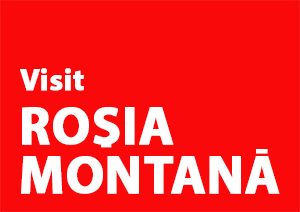Why to come and visit Roșia Montană? Scroll down to discover more. History Cultural Heritage Mining Cultural Landscape Lakes and Tarns Natural Monuments Churches The Famous Wax Tablets Biodiversity Films, Folk Legends and Beliefs Hiking Cycling […]
About Roșia Montană
Why to come and visit Roșia Montană?
Scroll down to discover more.
 History
History
 Cultural Heritage
Cultural Heritage
 Mining Cultural Landscape
Mining Cultural Landscape
 Lakes and Tarns
Lakes and Tarns
 Natural Monuments
Natural Monuments
 Churches
Churches
 The Famous Wax Tablets
The Famous Wax Tablets
 Biodiversity
Biodiversity
 Films, Folk Legends and Beliefs
Films, Folk Legends and Beliefs
 Hiking Cycling and Activities
Hiking Cycling and Activities
History
Two-thousand-year history and extraordinary mine galleries, preserved down the centuries, tell continuous story of Dacian, Roman, medieval, and modern times.
Cultural Heritage
Roşia Montană is the rural space with the richest heritage in Romania, with a patrimony that includes 53 monuments officially declared and more recognized by the experts but still unclassified. A place that can become a unique touristic destination, a treasure of the universal heritage.
Mining Cultural Landscape
Roșia Montană also possesses natural beauty and a living tradition, which reside in the harmony of the landscape and in the souls and minds of the local inhabitants.
Lakes and Tarns
Gold mining has left its mark on the general landscape too. The lakes, tarns and embankments that have been built to provide the water used in gold ore processing activities have formed picturesque scenery.
Natural Monuments
In the neighbourhood of Roșia Montană, several interesting geological sites are to be found, that have been established as “natural monuments”; among them are The Split Rock, The Raven’s Rock, Detunata Goală and Detunata Flocoasă.
Churches
During the Habsburg Empire was born a cosmopolitan society, tolerant and with a strong European spirit. The material evidence of this period is represented today by the influences upon the secular architecture and especially by the churches belonging to five different religions: Orthodox, Greek Catholic, Roman Catholic, Unitarian and Calvin.
The Famous Wax Tablets
Roşia Montană owes its fame in the international scientific world for the 50 wax tablets discovered in the Roman galleries, from which only 25 have survived. These tablets include contracts of sale, of loans and of the protocols for some colleges. They are considered one of the basic sources of Roman law, which is one of the most important legacies left by Rome to the modern world.
Biodiversity
The gold-mining community of Roşia Montană lies in a historic landscape that is also rich botanically. The area adjacent to the village has several semi-natural habitats, especially High Nature Value (HNV) grasslands (oligotrophic pastures, mesotrophic hay-meadows) and mires, together with orchids and other plant species.
Films, Folk Legends and Beliefs
Various legends are woven around the Roşia Montană mining town. The locals are said to have built German-style houses with the wall on the road to better hide the riches and secrets – they say that treasures are buried right in the thick walls of the houses and that only by the demolition you could find out what was hiding there. There are talks about the mines’ spirits, and so on about “morojnițe” – beings who go out into the world after midnight, they turn three times over the head, turn into an animal that resembles a squirrel and steals cow’s milk. Another legend relates to the founding of the village, and says a woman named “Cotroanța” would have first discovered a golden ball on a hill called Chernic while she was going out with the goats on the grazing grounds.
Hiking, Cycling and Activities
Come and see why Roşia Montana is so beloved and famous. Choose cool and authentic experiences to live with your family, friends and people of Roşia Montană!
Rent a Local
Rent a Local


